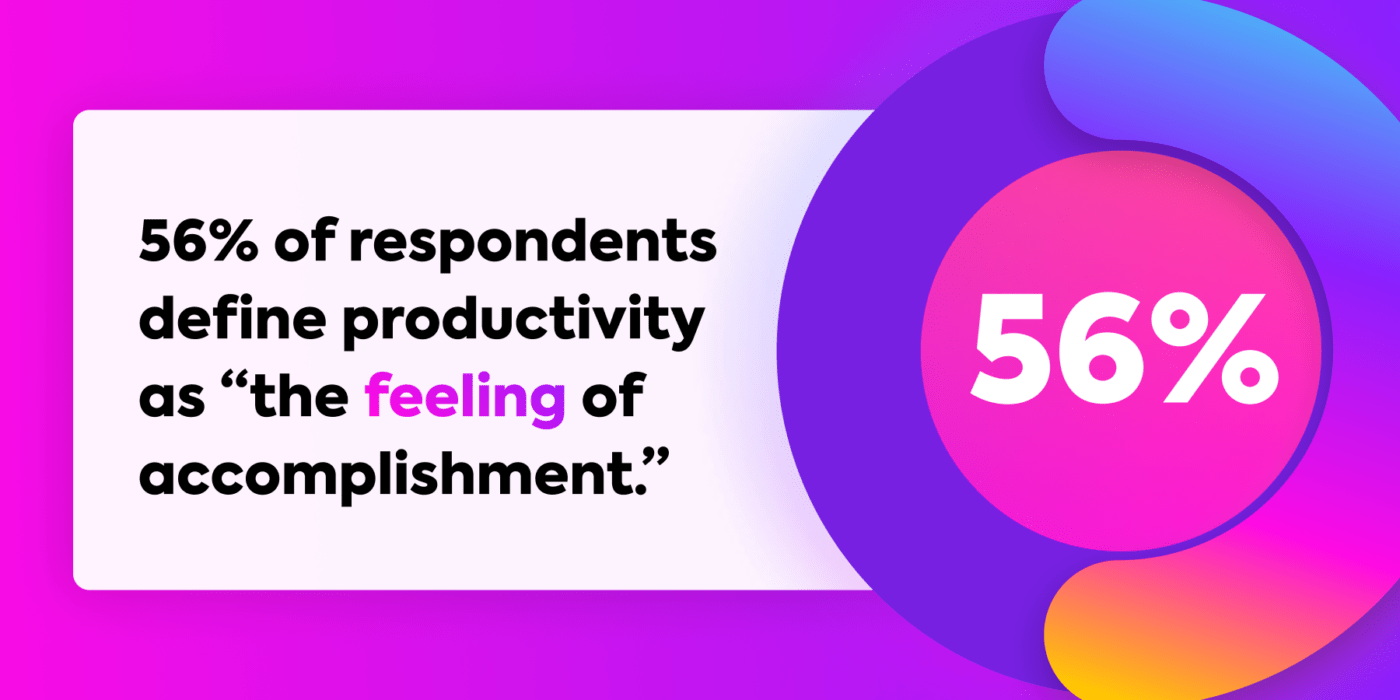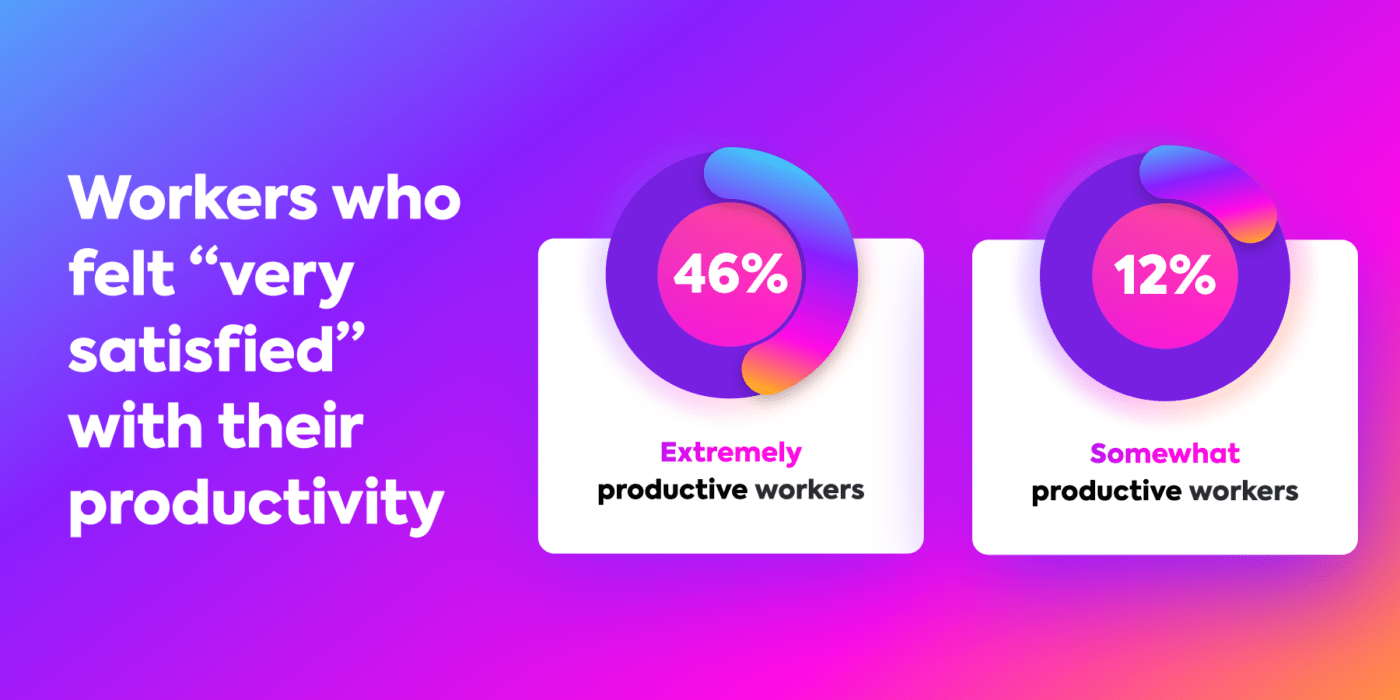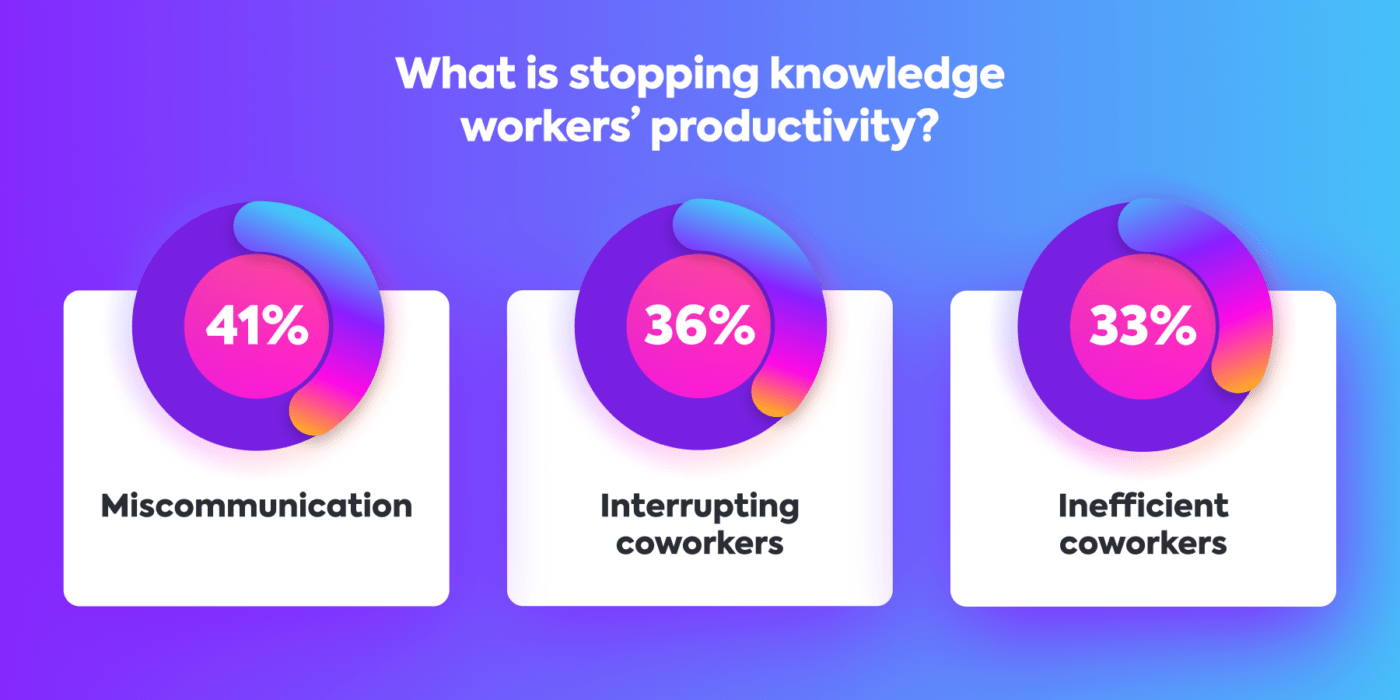

Have you ever thought about what productivity really is?
Is it just that feeling of accomplishment when you believe you’ve gotten a lot of work done? Or does it mean you’ve been able to complete things quickly without any roadblocks? Or perhaps you would define it as working hard and getting results?
Frankly, the definition is loose, making it pretty confusing.
Merriam-Webster defines productivity as “yielding results, benefits, or profits.” Unfortunately, that doesn’t suffice as a functional business definition, and so the question remains, what is productivity and how do we know if we’ve achieved it?
The reason this is so important is that today’s business leaders are obsessed with the concept of increasing productivity. With the state of the economy being questionable at best, CEOs are hyper-focused on getting the most out of existing resources and working as lean as possible.
Unfortunately, too many executives seem to be taking a knee-jerk approach to fostering more productivity. They’re mandating things we at ClickUp like to call “productivity bandaids,” such as “no meeting Fridays” and return-to-office requirements.
These concepts may sound effective, but they’re actually missing the point. Without a firm definition and way to measure productivity, how do we know that it’s being improved?
To uncover the root of this productivity issue, we surveyed over 1,000 U.S. knowledge workers for their insights on productivity. The findings were enlightening.
What is Productivity?
To begin with, everyone seems to have their own definition of productivity. For many, emotions play a significant role in their perception. For example, 56% of respondents define productivity as “the feeling of accomplishment.” But that begs the question: is the feeling of accomplishment and actually getting things accomplished one and the same? Or is the sense of accomplishment just an outcome of productivity?

For others, productivity has a more literal meaning. For example (37%) defined productivity as the action of “moving tasks forward efficiently without roadblocks,” and some (27%) said it was “accomplishing more with less time and effort.”
The one thing that is clear from the survey is that there isn’t a single definition of productivity that we can accurately measure. If we lack a clear definition of success, it’s hard to benchmark it and even more difficult to improve upon. This means that businesses looking to ramp up their productivity must define it before they ask their employees for more of it.
I don’t know, but I’m the best at it
Lacking a clear definition of productivity doesn’t stop us from judging ourselves or our peers on it. In fact, 87% of knowledge workers are pretty impressed with themselves, giving a self-evaluation of very or extremely productive, but only 64% reported the same of their peers.
But are we evaluating productivity on a fair scale?
When asked how knowledge workers measure their own productivity, they reported three key indicators—their ability to complete all of their tasks (58%), when they feel accomplished (51%), or when they get through more of their to-do list than they expected (43%).

In contrast, they graded their peers much more harshly and with more concrete measures, such as the volume of work they get done (47%), the success of their work (40%), and how they manage their time (38%).
It’s evident that there needs to be a more standardized way to measure productivity in order to close perception gaps, without which it’ll be impossible to know if productivity has increased and be able to recognize it appropriately.
Productive Workers Are Happy Workers
Productivity isn’t only beneficial from an organizational perspective. It’s important to individuals as well. The data shows that knowledge workers that consider themselves extremely productive, are four times as likely to report themselves as “very satisfied” at work.

The data is clear. Employees want to be more productive. They’re happier when they’re more productive. And, they want to stay in their jobs when they’re productive. So what role should the CEO and senior leadership play in creating an environment that fosters productivity?
Unfortunately, our research shows that companies aren’t doing enough.
For example, 46% of companies do nothing to recognize their most productive employees. A whopping 64% of companies are only offering verbal praise and recognition, despite the fact that 71% of employees would like to be recognized through bonuses and 60% would prefer a raise.
Breaking down the barriers to productivity

Kicking off a thoughtful and meaningful productivity improvement plan can be daunting. But understanding what limits productivity can be a great way to get the ball rolling.
According to the survey, knowledge workers reported that they are challenged by factors including miscommunication (41%), interrupting coworkers (36%), and inefficient coworkers (33%).

Knowledge workers have tried to overcome such barriers on their own by prioritizing their tasks (65%), minimizing distractions (57%), and focusing on goals (another 57%). However, with the constant onslaught of notifications and multiple platforms to work across, mitigating these disruptions can be easier said than done. Specialized software can play an important role in helping to reduce challenges at an organizational level.
That said, there is a generation gap related to using technology to increase productivity. According to the data, 31% of Gen Z have embraced the concept of distraction-blocking software versus 16% of baby boomers. Further, just 18% of Baby Boomers use productivity software as opposed to 55% of Gen Z workers.
As technology continues to advance and distractions have the potential to become more plentiful, it will become more and more important to find tools that help to cut down on noise and help to facilitate focus. Companies and individuals that lean into technology and utilize the full breadth of the tools available to them will be the ones that get ahead.
Starting at the Beginning to Get to the End Goal
The bottom line is that if productivity is a corporate mandate, it is necessary for executives to define it before asking to maximize it. Blind calls for “more productivity” will fall heavy on already hard-working employees, with the potential to leave them frustrated or burnt out.
Instead, leaders should view this as an opportunity to inspire employees, get them engaged, and rally their teams toward a collective goal. It all begins with a clear understanding of what productivity looks like within the organization, creating a consistent way of measuring it, and agreeing on a meaningful way to acknowledge and reward it.



